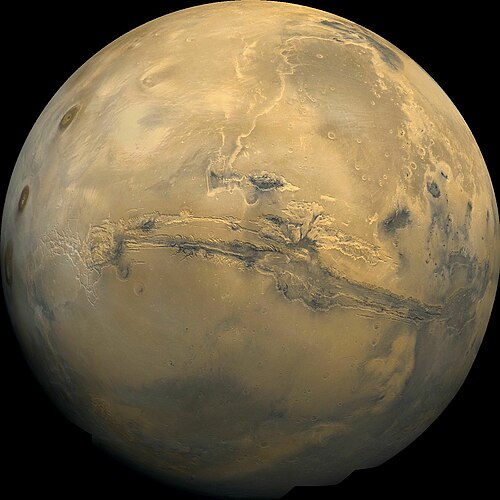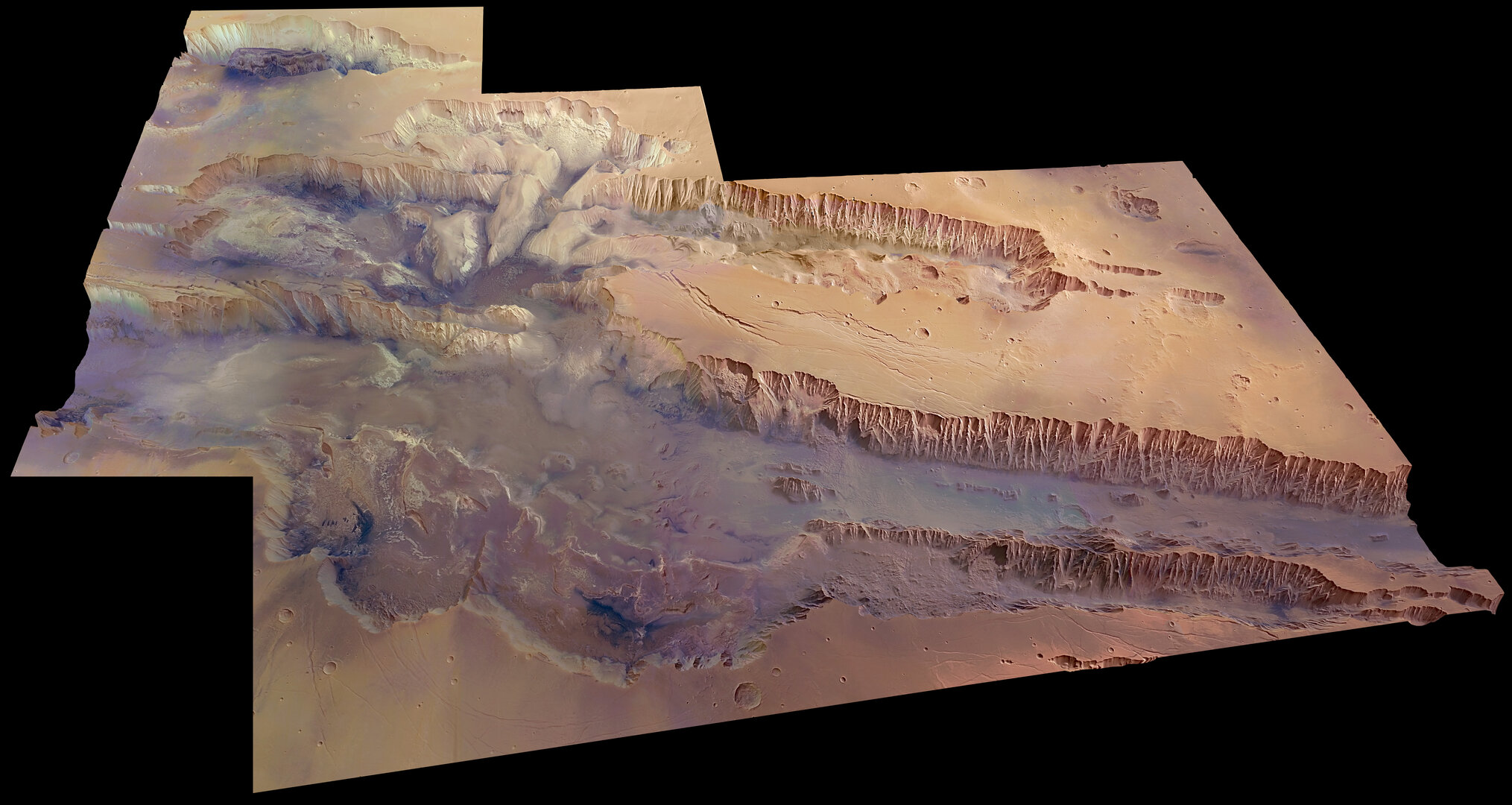
All you need to know before visiting one of the largest canyons in our solar system: Valles Marineris.
First of all, let’s be clear: a day visit is not going to cut it for this ragged geological scar (pardon the pun). Valles Marineris covers nearly one fifth of the circumference of Mars, making it not only Mars’ largest canyons but one of the largest canyons in the solar system.
Spanning 4,000 kilometres, it would take any law-abiding person (who complies to the 96kmh regulation currently in place for all forms of surface space travel) around 41 hours just to drive from one end of the ravine to the other. Make the most of your trip to Mariner Valley and spread your drive over three or four days. Trust us, you’ll want some time for a few snaps of the terrifying Noctis Labyrinthus in the west of the valley.
How to subsist the Noctis Labyrinthus in Valles Marineris?

If you haven’t figured it out already, Noctis Labyrinthus simply translates to the Labyrinth of the Night. Sound appealing? Even the Greeks would never have envisioned that their god of war could be home to such a cataclysmic crack.
If you’re starting your trip at the west of Valles Marineris, near Mars’ equator, the Labyrinth of the Night will be your first mission. Ensure you are appropriately dressed, with the correct equipment to negotiate the copious boulders and debris of past avalanches and rockslides that have come to rest at the bottom of the maze of valleys and canyons.
On the plus side, the west side of the valley offers average temperatures of -100℉, a significant 50 °F warmer than other regions of the red planet.
Exploring the chasmata of Valles Marineris

If (not when) you manage to subsist Mars’ most treacherous path, staggering views await you. Perhaps not the dazzling views you might get from the peak of Olympus Mons, but certainly glimpses of a chasmic death that will send you staggering away.
The Melas chasma comprises the deepest point of the entire canyon system. At the east of Valles Marineris, the chasma measures a towering 11km deep. As well as offering incredible views, the extreme depths and steep cliffs also, somewhat surprisingly, may tempt you to stay longer at the bottom of the pit.
Due to the deep cliffs, the bottom of Melas chasma has the highest natural air pressure of Mars, making the location very almost habitable by colonisers. Oh, and don’t forget the entertainment!
You and your fellow settlers would be free to spend many filled-days scouring the ancient riverbeds in search of Martian fossils. What’s that, they don’t exist? Not according to the Mars Global Surveyor camera, which spotted some layering of material suggesting that Melas may be the site of an ancient subaqueous setting waiting to be rediscovered.
Understanding the formation of Valles Marineris
Scientists believe that billions of years ago, Mars may have been the optimal destination for terraforming, rich with water. As molten rock pushed through the volcanic Tharsis region, the strain on Mars’ crust would have caused large faults and fractures. The spreading cracks would have facilitated an upward rush of subsurface water, carving a series of channels and forming the Valles Marineris that we see today.
Many parts of Mariner Valley, however, remain mysteries to human understanding. Why did the flow of water carve the west of the valley into an ungovernable maze of the night and the east into a deep chasm of relief?
Maybe you can use your trip to Valles Marineris to answer some of these questions!
